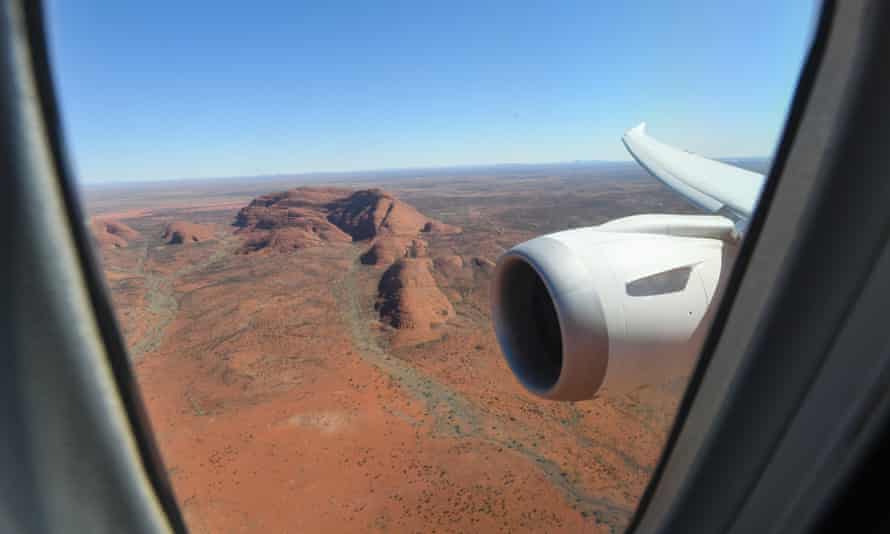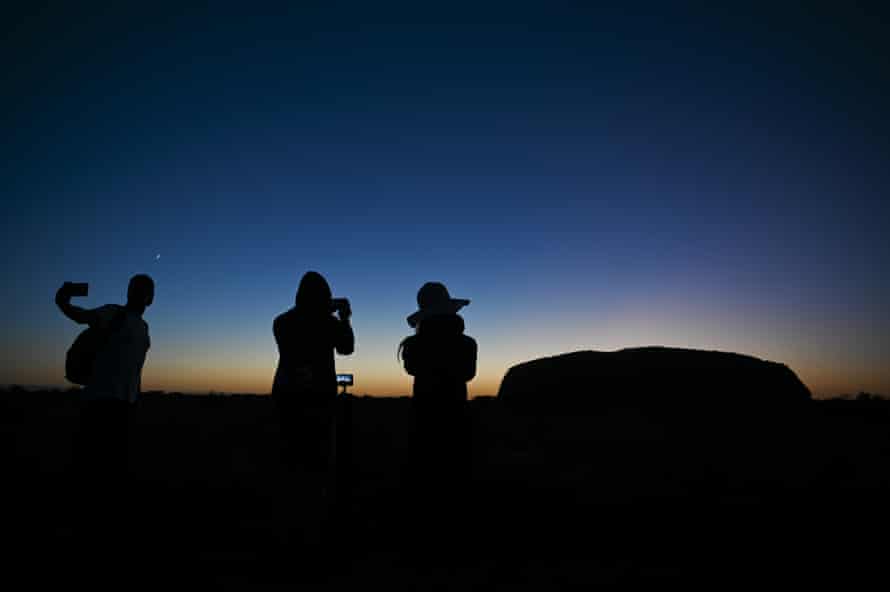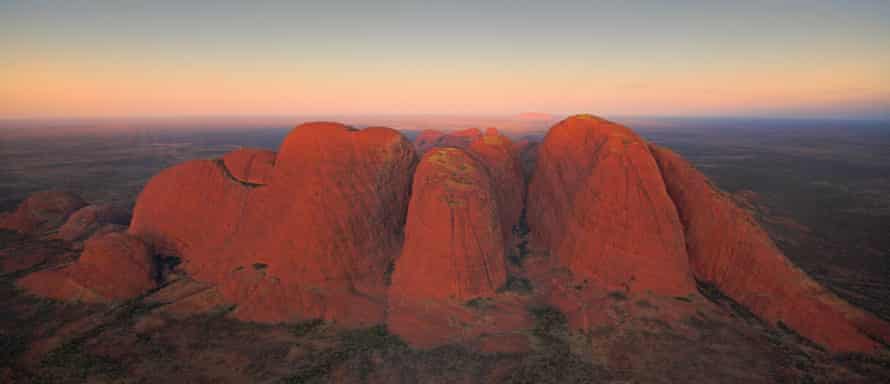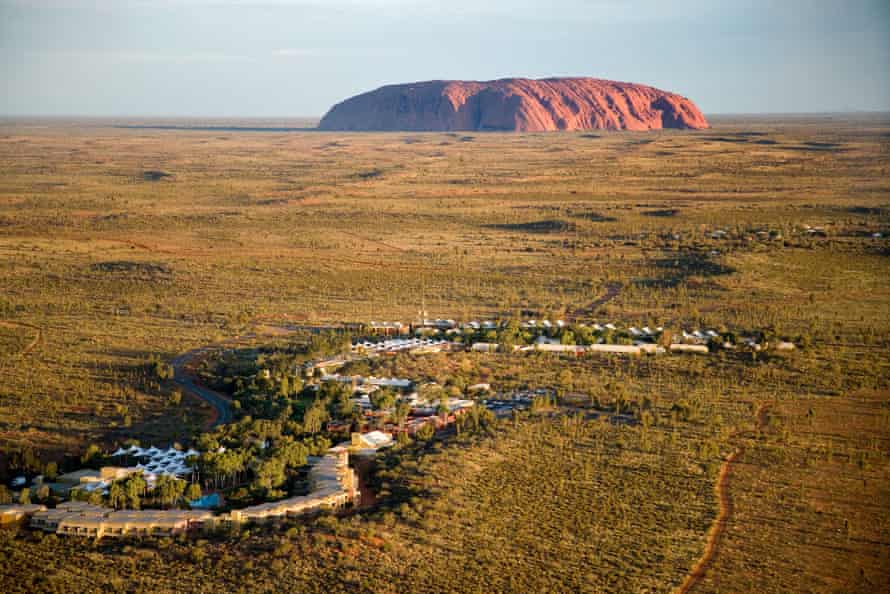
You’ve seen it on tea towels, TV ads and kitschy souvenirs. But it’s a good bet that you haven’t seen it up close and personal in all its red-earth glory. Uluru is almost a victim of its iconic status. We Australians know it so well that many of us don’t know it at all.
While international travellers circle the globe to marvel at the icon of the red centre, Australians tend to be blasé about what’s in their own backyard. Perhaps we reckon it’s not going anywhere, and it will still be standing when we finally get around to visiting. Or perhaps it’s the cost of traveling to the heart of the country which keeps it on the back burner. It can, after all, seem cheaper to go to Fiji.
But we shouldn’t leave it on our to-do list. Uluru is the geographic and spiritual heart of our country. More than that, it is gobsmackingly awe-inspiring. Nothing can prepare you for your first encounter.
Visiting can be expensive, but it’s worth it. While there’s not really a cheap way to do it, there are plenty of cheaper options and ways you can save if you plan ahead.
Getting there
Uluru is seriously remote, and the gateway is Yulara, the town that was established in the 1970s to support tourism to the rock. It’s grown into a village that provides both tourist accommodation and living quarters for the staff who service it.
If you’re flying, request a window seat to get a great aerial view of Uluru. Return flights with Jetstar can be found for as little as $270 from Melbourne and about $350 from Sydney, but can soar to $800 and above in the August and September peak period. Cheaper options can regularly be found so long as you’re flexible in which days you fly.
If you’re getting to Uluru by car, be prepared for a road trip with very little between stops. It’s four-and-a-half-hours drive from Alice Springs.
Uluru
While getting to Uluru can be expensive, to actually step into the Uluru-Kata Tjuta national park costs only $38 for three days. Entry is free for under 18s. The two sites, Uluru and Kata Tjuta rising majestically out of a seemingly barren landscape, sit just a 40-minute drive from each other.
Uluru is easier to take in, and is more accessible given its proximity to Yulara and the wealth of tours and options for navigating it.
At Uluru, getting up before sunrise is not just necessary (temperatures become too hot for long walks in the middle of the day), it’s breathtaking.
Regardless of the time, you’ll also want to bring a fly net for your hat – as the sun rises, flies can become intolerable (nets sell for $10 in Yulara). I’d also recommend buying fly repellent cream to dab on the back of your ears.
Out of the heat of the day, even a moderately fit person can do the flat 10km walk around its base. You can’t get lost because you’re basically walking around in a circle, though a guide (Seit tours run several trips, their sunset tour starts from $73, up to a trekking tour for $177) will be able to enrich the experience.

If you opt to do it for free by yourself, and walk around at your own pace, plaques installed by the national park give insights into the cultural significance of various caves and waterholes. They also tell some of the stories precious to the local Anangu traditional owners, such as at the Kapi Mutitjulu waterhole, where it is said that the spirit of Minyma Kuniya combined with her nephews to become Wanampi, a watersnake.
For those averse to walking, you can pedal a bike ($60 for three hours hire from Outback Cycling), ride a Segway (from $149) or mount a Harley Davidson (from $139).
One visit to the rock may not be enough, and you might find yourself racing back in time for sunset, when temperatures become bearable again. If you do, you’ll join a contingent of sightseers by their cars and campervans, all with cameras, patiently watching as the colours of Uluru transform in the fading light.
“A lot of people don’t realise that because many parts of Uluru are sensitive sites due to Anangu belief, so much of it isn’t in the photos most people will have seen before coming here,” notes Steve Baldwin, a park ranger.
Kata Tjuta
Kata Tjuta (formerly the Olgas) is often the Cinderella sister. Many visitors make it to Uluru without going down the road to see the equally striking domed rock formations. And that’s a mistake.
As with Uluru, visiting Kata Tjuta is best at sunrise or sunset, away from the peak of the heat. Given this, you’d be hard-pressed to do comprehensive treks around both sites in the same day, but could feasibly spend a few hours at Kata Tjuta in a morning and see Uluru at sunset.

As you approach, the site appears to be one of improbably large, rounded boulders, leaning together and impregnable. But for the intrepid adventurer – and you do need to be committed for this sometimes difficult three-hour self-navigated, free walk – there is the magical Valley of the Winds, that spreads out before you once you’ve scaled the jagged and steep incline. By the way, it’s not called the Valley of the Winds for nothing. Be prepared to be literally blown away. It gets quite chilly.
Most tourists settle for a peek at Walpa Gorge, which is its own kind of special: two giant facing walls of sheer rock offering a small slice of sky above.
Getting around – do I need a car?
Uluru is not within walking distance, so it’s your car or a tour bus.
If you’re travelling solo, the Uluru hop-on hop-off service offers a return trip to Uluru, for $49, and $80 to Kata Tjuta. These bus trips run for the sunrise and sunset timeslots.
For more flexibility, you can rent a car from Yulara airport. Having your own wheels (you need to book in advance) means you can go back and forth to the national park whenever the mood takes you.
While deals can be had, most car rental companies’ cheapest options will cost about $320 per day. (Like the rest of the country, rental car companies have been stung by short supply throughout the pandemic, and rental prices in Uluru are also higher than average.)
What else is there to do?
One attraction that won’t cost you a cent is the brand new Gallery of Central Australia (Goca) in Yulara. It’s a platform for local Indigenous artists, entry is free, and there are daily tours from 10:30am. Goca is genuinely impressive – the vibrant use of colours in the works on its walls make this a rewarding place to visit. The gallery showcases works from emerging and independent artists from across Central Australia, with paintings and some sculptures available to purchase.
There are a number of free experiences available at the resort which range from didgeridoo workshops and dot painting classes. The Bush Food experience, a guided walk through the resort of local ingredients – such as sweet bush plums used in food and medicine . Tour guides give a rundown of when and how to pick fruits, to the cultural and nutritional importance of the plants.
However, you may just want to spend any downtime escaping the heat in one of the several swimming pools throughout the complex – which are free for those staying at the resort.
Finally, look up. Away from the light pollution of a city, gazing up at the night sky feels like watching a movie, as layers of stars and patterns become visible. There are several stargazing tours available but the key is really to just drive a little out of Yulara, turn off all car and phone lights, and look up. It’s also free.
Where to stay
The Ayers Rock Resort complex in Yulara is the (only) place to stay. Hotel options have a two-night minimum, starting with the luxurious Sails in the Desert (from $475/ night) and Desert Gardens (from $400/ night) which sports views of Uluru from rooms.

The cheapest option is the 3.5 star cabin-style Outback Pioneer Hotel (from $300/ night). The Emu Walk apartments (from $420 per night for a one bedroom apartment that sleeps four), suits families and groups wanting cooking facilities in their room.
For travellers in campervans and those looking to economise with tents, there is a campground at the resort, with communal cooking and bathing facilities, which starts at $43 per night.
Where to eat
Once you’ve booked accommodation, it’s worth putting thought into some of your meals. For the serious and cashed-up foodie, there’s the Tali Wiru experience, a $380 a head “gastronomic adventure” served in a private dune under the stars.
There are plenty of far cheaper eats available around the Yulara town square. The Kulata Academy Cafe trains the resort’s staff and sells pies and sandwiches ($10.50, served with side salad). There are several other takeaway and cafe options in the square, and an IGA supermarket for supplies (they do takeaway BBQ chickens for $11). The pub at the Outback Pioneer Kitchen, near the camping site, offers pub fare with burgers for $18 and pizzas for $25.



